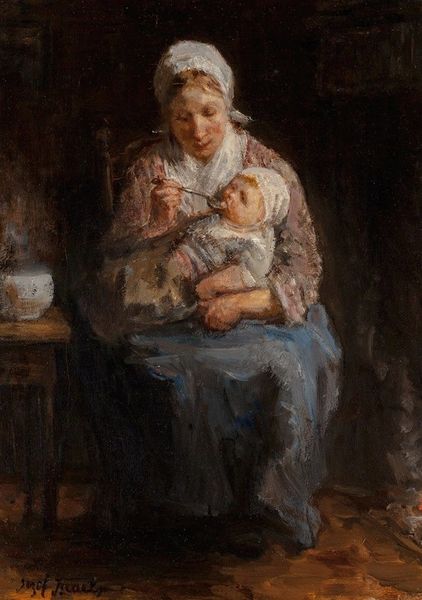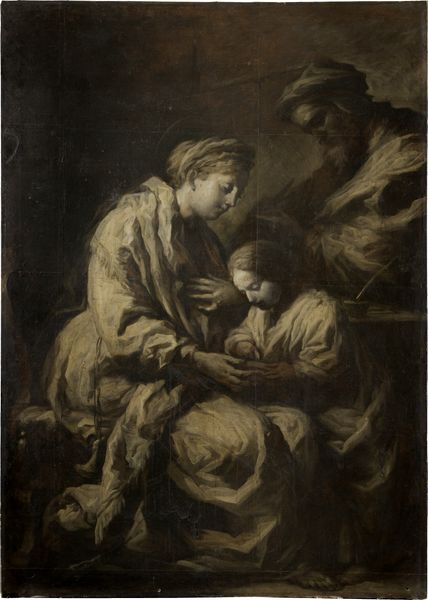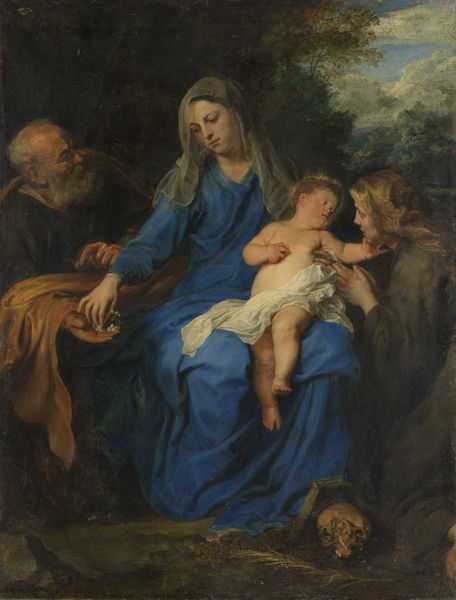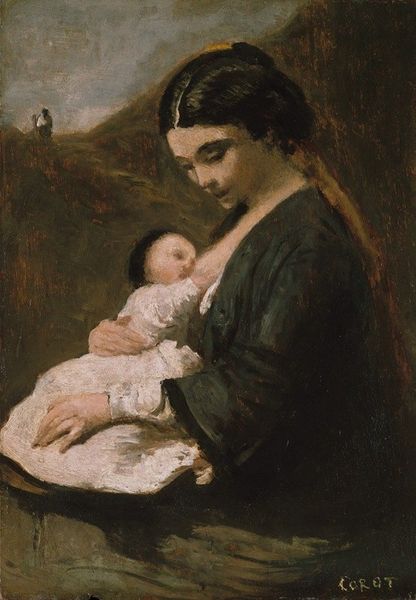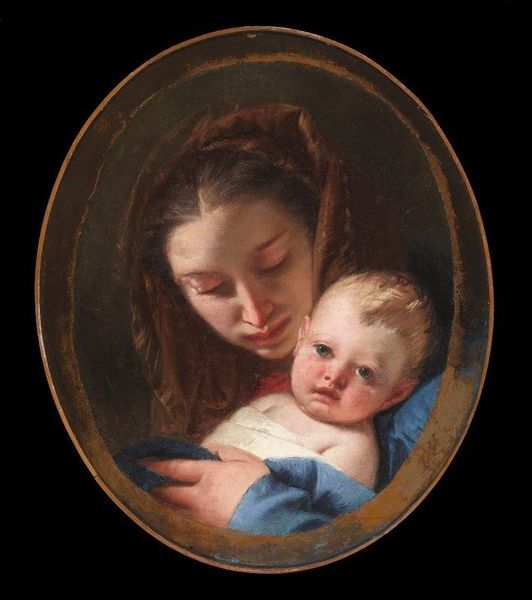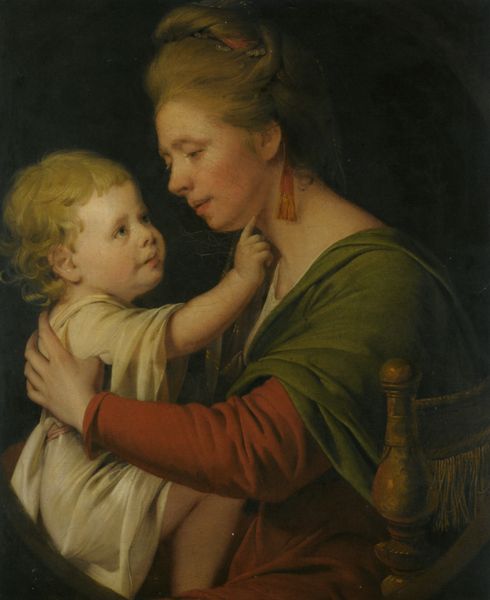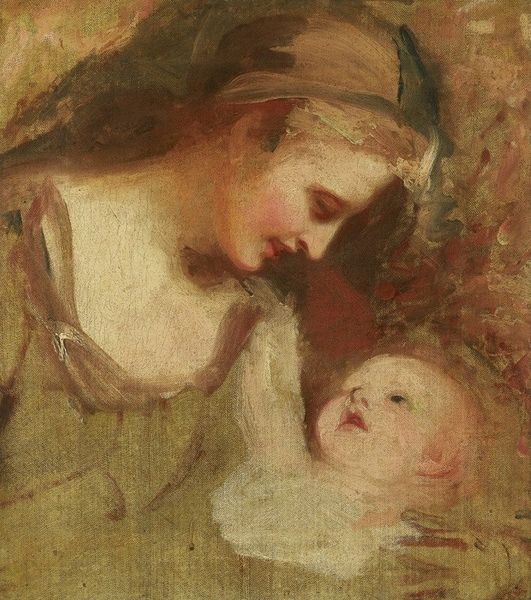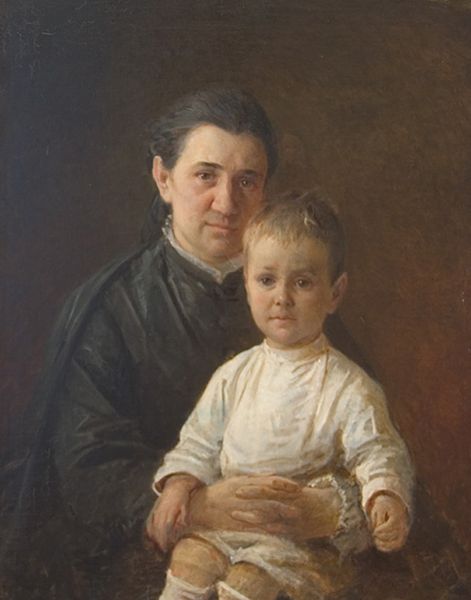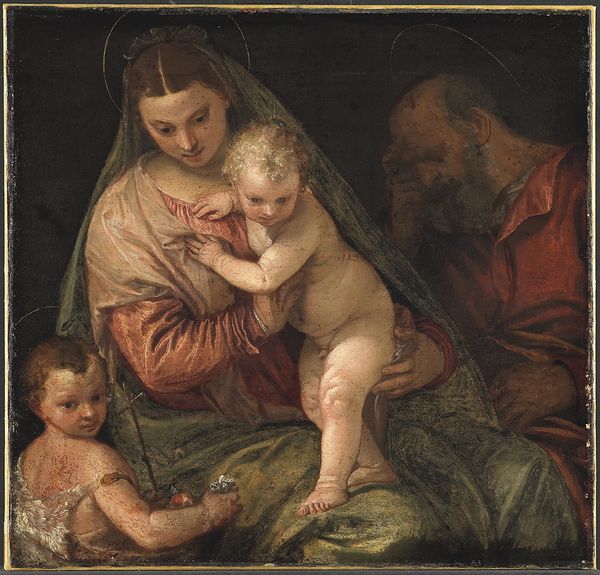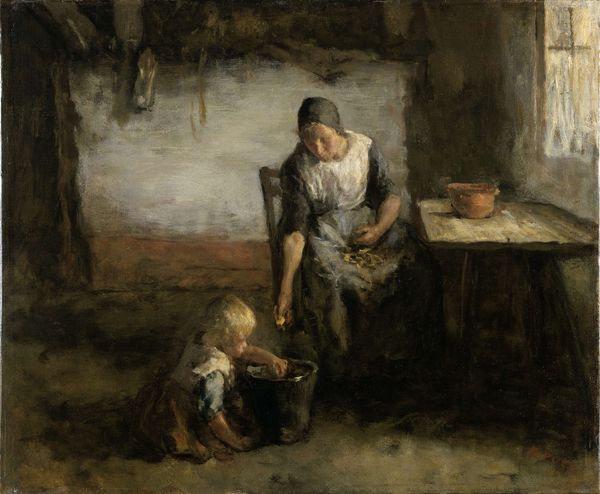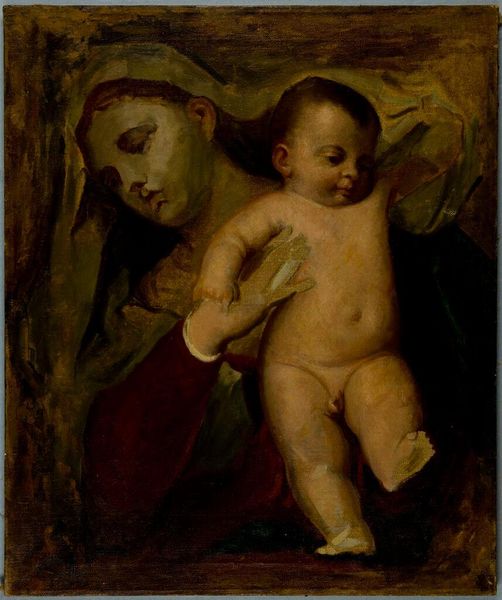
plein-air, oil-paint
#
portrait
#
mother
#
dutch-golden-age
#
impressionism
#
plein-air
#
oil-paint
#
charcoal drawing
#
oil painting
#
genre-painting
#
realism
Dimensions: height 162 cm, width 107 cm, depth 15 cm
Copyright: Rijks Museum: Open Domain
Editor: Here we have "A Mother with her Child" by Albert Neuhuys, painted sometime in the 1880s or 1890s. It's an oil painting that has this very intimate, quiet mood. What's interesting is how Neuhuys seems to really focus on the everyday experience. What do you see in this work? Curator: Well, I find it telling how Neuhuys uses the very materials to depict this scene of domestic labor. Note the roughness of the woven basket. Think about the labor involved, from harvesting the raw materials, likely flax or hemp, to spinning and weaving. It's all implied in the object itself. Consider, too, the material circumstances: the mother's worn clothes. These were not simply painted to create an image; they represent the real-world economics of garment production. What kind of social structure demands so much physical labor for basic necessities? Editor: So you are saying that the art materials of the basket reflect production beyond artistic craft? Curator: Precisely. Neuhuys presents a visual record of working-class life and, even more potently, makes visible the social relations of production. What we’re seeing isn’t just sentimentality; it’s a coded message about economic reality. We might consider, how were paintings like this consumed? Was it for an audience outside this depicted lifestyle? What message would a city dweller, able to afford such a work, derive from observing this mother and child in the home? Editor: I hadn’t considered the relationship of consumer to producer in the art itself. Curator: Looking at art through the lens of its production and reception adds a rich layer to our understanding. Every brushstroke reflects both artistry and a social contract.
Comments
No comments
Be the first to comment and join the conversation on the ultimate creative platform.

